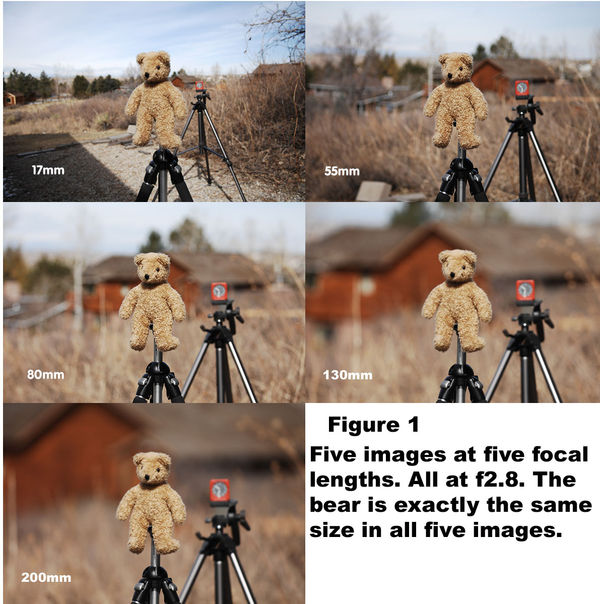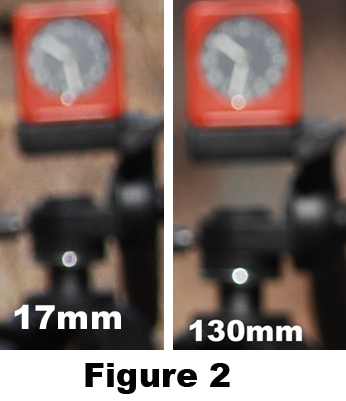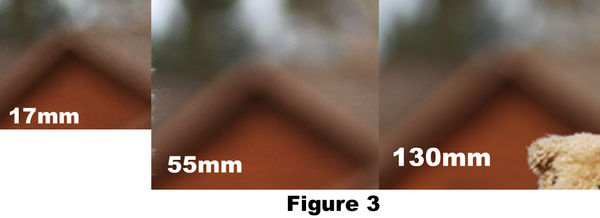Depth of Field
Oct 25, 2012 12:00:32 #
Being older sometimes means it takes a bit longer for things to sink in.
In regards to Depth of Field I am a bit confused.
From reading many articles I am thinking that to get a picture with the smallest Depth of Field you should use a combination or all of the following:
1. A longer lens length
2. A smaller F-stop number
3. A shorter distance to the subject.
4. A bigger distance between subject and background.
Have I got it correct?
If not suggestions would be appreciated.
Thanks
In regards to Depth of Field I am a bit confused.
From reading many articles I am thinking that to get a picture with the smallest Depth of Field you should use a combination or all of the following:
1. A longer lens length
2. A smaller F-stop number
3. A shorter distance to the subject.
4. A bigger distance between subject and background.
Have I got it correct?
If not suggestions would be appreciated.
Thanks
Oct 25, 2012 13:09:53 #
Oct 25, 2012 13:47:05 #
I'd say you have most of it right, Ron. To limit DOF you would choose a larger aperture, represented by a smaller # f-stop. So you would use f-2.8 rather than f-8, for example.
You're on the right track!
Oops...just reread your post, you already had it right! My bad!
You're on the right track!
Oops...just reread your post, you already had it right! My bad!
Oct 25, 2012 14:10:45 #
Actually, aperture is a fraction, measured in relationship of the actual iris diameter to the focal length (f) of the lens. Thus, proper nomenclature is f/2.8 or f/8 as examples. Not f:8 nor f-8. Therefore f/2 is LARGER than f/22. Hence, a smaller f-stop number (f/22) increases DoF; and a large f-stop number (f/2) decreased DoF.
Oct 25, 2012 14:27:34 #
jdubu
Loc: San Jose, CA
Think of DOF in this way.
Imagine a swimming pool's water surface to bottom of the pool as the depth of field in focus.
The shallow end of the pool (or depth of field in focus) would be at the smaller number of depth (ie f/ 2.8)
The deeper end of the pool (in focus) would be at the larger number of depth (ie f/ 22)
The closer the distance subject to camera, the shallower DOF at any given aperture.
The longer the focal length of the lens, the shallower DOF at any given aperture.
Imagine a swimming pool's water surface to bottom of the pool as the depth of field in focus.
The shallow end of the pool (or depth of field in focus) would be at the smaller number of depth (ie f/ 2.8)
The deeper end of the pool (in focus) would be at the larger number of depth (ie f/ 22)
The closer the distance subject to camera, the shallower DOF at any given aperture.
The longer the focal length of the lens, the shallower DOF at any given aperture.
Oct 25, 2012 15:02:40 #
Ron M wrote:
Being older sometimes means it takes a bit longer ... (show quote)
Ron, technical formalities aside, YES, you have it right. Nikonian clarified the f stop issue quite well for you.
But don't confuse the issue. Since most long lenses are pretty slow(f4) they can only do so much. Very limited working DoF can be produced by lenses such as the 50mm, 1.4 because of its relative very large aperature. Legendary status goes to the Canon 200mm f/1.8.
Ron, are you just trying to understand it, or are you contemplating a lens that will produce the best bokeh(background blur) for you in a given situation?
Oct 25, 2012 15:29:52 #
I'm thinking of getting a lens that will let me do shallow depth of fields
Would like it to be some kind of zoom
I was thinking of getting the Canons EF-S 17-55mm f/2.8 IS USM lens
Any comments on that one or would you suggest something else
Would like it to be some kind of zoom
I was thinking of getting the Canons EF-S 17-55mm f/2.8 IS USM lens
Any comments on that one or would you suggest something else
Oct 25, 2012 15:34:29 #
Oct 25, 2012 16:13:42 #
Ron M wrote:
I'm thinking of getting a lens that will let me do shallow depth of fields
Would like it to be some kind of zoom
I was thinking of getting the Canons EF-S 17-55mm f/2.8 IS USM lens
Any comments on that one or would you suggest something else
Would like it to be some kind of zoom
I was thinking of getting the Canons EF-S 17-55mm f/2.8 IS USM lens
Any comments on that one or would you suggest something else
All that matters is the aperture. So ANY 2.8 lens will deliver the same exact DOF given the same image size on the sensor. I know you keep getting all this stuff about short vs. long lenses, but it is only because the lens makes you CHANGE POSITION.
The only thing that changes with shift in position is perspective
If you keep the image the same size, the DOF is virtually identical for any focal length. I have attached three images to prove the point. The images do not look exactly the same since different lenses were used and the number of blades in the aperture may change the look just a tad.
But look at #2 a 17mm and 130mm and tell me there is a significant difference. The numbers on the clock look the same in both.
In the first image, the far roof does indeed LOOK sharper because it is so small, but in Image #3 you can see that except for being so grainy due to the extreme enlargement, there is little difference.
So...given the same image size, focal length is of no consequence.
Well, actually there is a very small effect of focal length, but it is of interest only to optical engineers (and pixel peepers), not photographers



Oct 25, 2012 16:40:40 #
CaptainC wrote:
quote=Ron M I'm thinking of getting a lens that w... (show quote)
Very nice comparison examples Captain.
Oct 25, 2012 16:47:17 #
MT Shooter wrote:
quote=CaptainC quote=Ron M I'm thinking of getti... (show quote)
Thanks MT - I researched this for an article for my camera club a few years back - almost forgot about those images.
I hope this helps with the whole DOF thing. Telling someone a longer lens will give a shorter DOF may or may not be the answer. If you cannot change position, then yes it will because it makes the subject bigger.
Oct 25, 2012 18:46:54 #
Thank you everyone.
It's a LOT clearer to me now
I thought I was on the right track and you have cleared it for me.
Thanks for the notes on image size / perspective.
It makes sense to me now.
Thanks again
It's a LOT clearer to me now
I thought I was on the right track and you have cleared it for me.
Thanks for the notes on image size / perspective.
It makes sense to me now.
Thanks again
Oct 25, 2012 19:03:40 #
DOF? Take a 50mm lens and as you change your aperture, press the dof preview button to see how the dof changes. Don't even take a photo. If you want to see how dof works on your other lenses, do the same thing. This is how I learned dof with my first, and perhaps best slr, my Canon ftb.
Oct 25, 2012 19:06:00 #
CaptainC wrote:
quote=Ron M I'm thinking of getting a lens that w... (show quote)
Thanks, CaptainC.
A picture(s) is worth a thousand words.
Just not sure why the bear keep moving closer to the other tripod and barn?? Just joking.
Oct 26, 2012 02:23:23 #
CaptainC wrote:
I hope this helps with the whole DOF thing. Telling someone a longer lens will give a shorter DOF may or may not be the answer. If you cannot change position, then yes it will because it makes the subject bigger.
I hope this helps with the whole DOF thing. Telling someone a longer lens will give a shorter DOF may or may not be the answer. If you cannot change position, then yes it will because it makes the subject bigger.
Captain, thanks for that excellent presentation. We looked at it once before, how quickly we all forget! Again, thanks
If you want to reply, then register here. Registration is free and your account is created instantly, so you can post right away.








